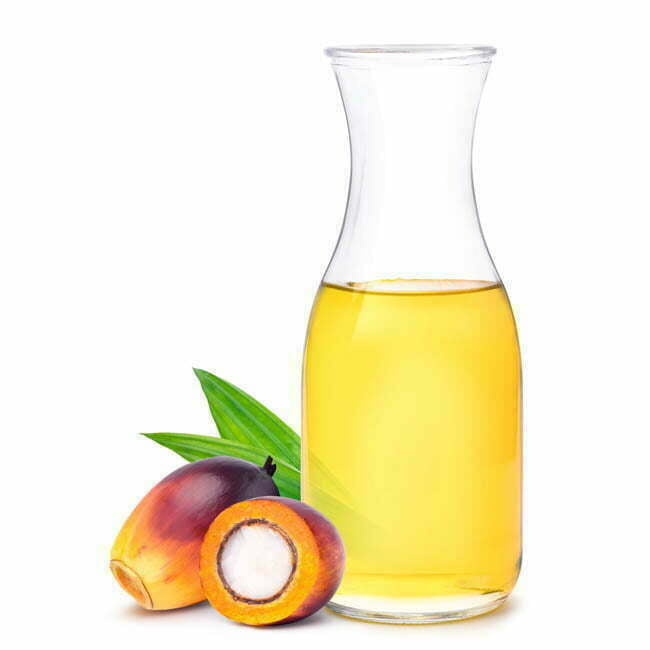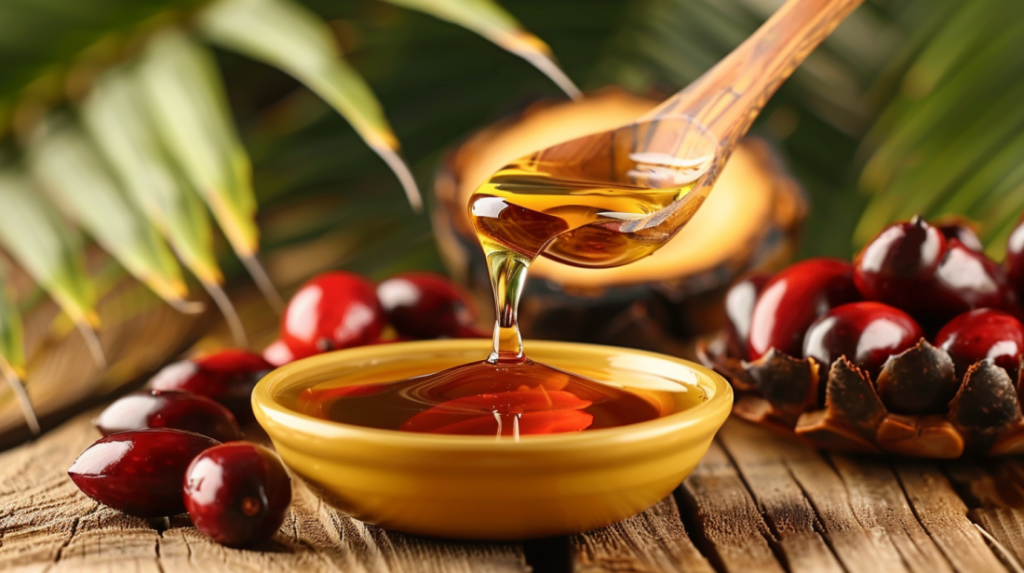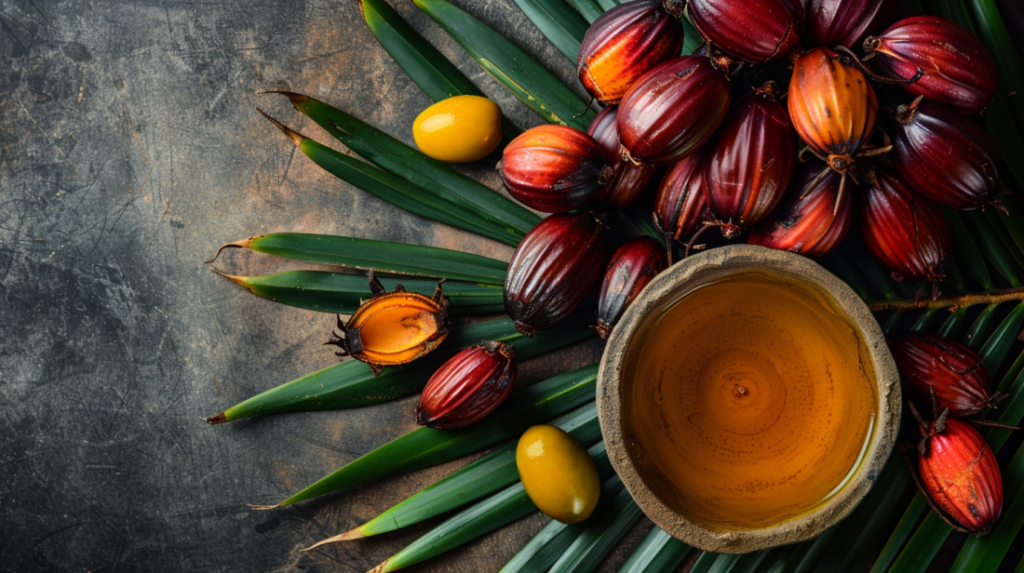African Red Palm Oil, lushly derived from the landscapes of Africa, indulges us in a tapestry rich in nutritionally beneficial aspects and economic significance, as well as tendering debates regarding ethical factors. This vibrant red-hued oil-extracted fruit of the Elaeis guineensis tree is not just a culinary oil but also a subject of global discussions spanning health, sustainability, and human rights. We shall, therefore, not only explore the benefits and processes of production but also take into consideration the vital ethical implications that are associated with its premiere from tree to table. This investigation would present a balanced view by bringing out the health benefits and socio-economic impact of the oil while taking a critical stand on its environmental as well as ethical challenges. In that way, we will navigate the intricate terrain of African Red Palm Oil, a product as rich in controversies as it is with colour and cultural significance.
Nutritional Benefits
Radiant with its hallmark red hue, African Red Palm Oil is a nutritional powerhouse. Vitamin A and E packed, it’s a natural source of antioxidants vital in fighting cellular damage. Red Palm Oil, contrary to most vegetable oil sources, is a precursor of vitamin A since it contains high beta-carotene content in its oil that gives the colour. If ingested, vitamin A prevents eyesight weakness as well as helps boost immunity. Red Palm Oil has a significant difference in fat composition, contrary to most vegetable oils. It has a balanced mix between saturated and unsaturated fats, thus stable under high heat and preferred for cooking. Furthermore, it has a unique form of vitamin E called tocotrienols that has proven possibilities in the reduction of stroke threats and fighting brain-related diseases.

Palm oil
Palm oil is obtained from Elaeis guineensis palm, commonly known as oil palm. It is widely used in the food industry because it is an excellent base for desserts, cakes, ice cream, creams, chocolates, etc. Unrefined palm oil is a great cosmetic ingredient rich in many vitamins and microelements.
Production Process
The journey of Red Palm Oil starts in the verdant landscapes of Africa, where the oil palm tree (Elaeis guineensis) flourishes. The production process begins with harvesting the fruit bunches, brimming with oil-rich kernels. These are then transported to mills for processing.
The milling process involves separating the fruit from the bunch, followed by steaming to soften the pulp. Subsequently, the pulp is pressed to extract the crude oil. What’s notable is the minimal waste; by-products find use in creating animal feed and organic fertilizers.
Socio-Economic Impact
Red Palm Oil production is a significant economic pillar for many African communities. It generates employment and has been a lifeline for smallholder farmers. This industry also contributes to infrastructure development in rural areas, though it’s not without its challenges.
Ethical Considerations
Mosaic is concerned about light African red palm oil but is concerned about its ethical dimensions. The key here is the environmental impact, mainly the deforestation it impacts. The process of expanding oil palm plantations often leads to the destruction of critical ecosystems, which directly threatens wildlife and biodiversity. This invasion not only destroys the natural habitats but also contributes to greenhouse gas emissions. The other side of the industry is equally riddled with ethical issues. Violation of land rights features in circumstances where indigenous communities are dispossessed of their ancestral lands without consent or due compensation. Such displacement them from their cultural heritage and livelihoods. Moreover, labour issues ranging from exploitation to child labour significantly blemish the industry. Workers are usually subject to harsh conditions, poor safety practices, and low wages.
Regarding the general perspective, the ethical considerations span up to the consumers and global markets. The demand for palm oil across different industries fuels such ethical challenges. Consumers demand transparency and sustainability in Red Palm Oil’s production, thereby pushing corporations to adopt responsible practices. These ethical concerns need to be addressed not only as a corporate responsibility but also as a societal responsibility. It takes combined efforts from the producers, governments, and the consumers at large to ensure that the environmental degradation and social injustices are not the cost incurred for the benefits of Red Palm Oil.
Environmental Initiatives
Measures in response to these challenges for sustainable production are increasing. These include certifications such as the Roundtable on Sustainable Palm Oil (RSPO), which is a standard relating to environmentally responsible palm oil production. The importance of traceability and transparency through the supply chain is growing somewhat.

Health Debates
While celebrated for its nutritional profile, Red Palm Oil has faced scrutiny. Critics point to its saturated fat content, linking it to cardiovascular diseases. However, proponents argue that in moderation and considering its unique fat composition, it can be part of a healthy diet.
Conclusion
While praised over its nutritional profile, Red Palm Oil has faced criticism. Its content in saturated fats has been associated with cardiovascular diseases by critics. However, proponents have argued that in moderation and taking into account its unique type of fats, the same can be integrated into a healthy diet.
References
Oguntibeju, O. O., Esterhuyse, A. J., & Truter, E. J. (2009). Red palm oil: nutritional, physiological and therapeutic roles in improving human wellbeing and quality of life. British journal of biomedical science.
Adeneye, A. A., & Benebo, A. S. (2007). Ameliorating the effects of acetaminophen-induced hepatotoxicity in rats with African red palm oil extract. Asian Journal of Traditional Medicine, 2(6), 244-249.
De Leonardis, A., Macciola, V., Niro, S., Nag, A., & Panfili, G. (2017). Limits and potentials of African red palm oils purchased from European ethnic food stores. European Food Research and Technology, 243, 1239-1248.


